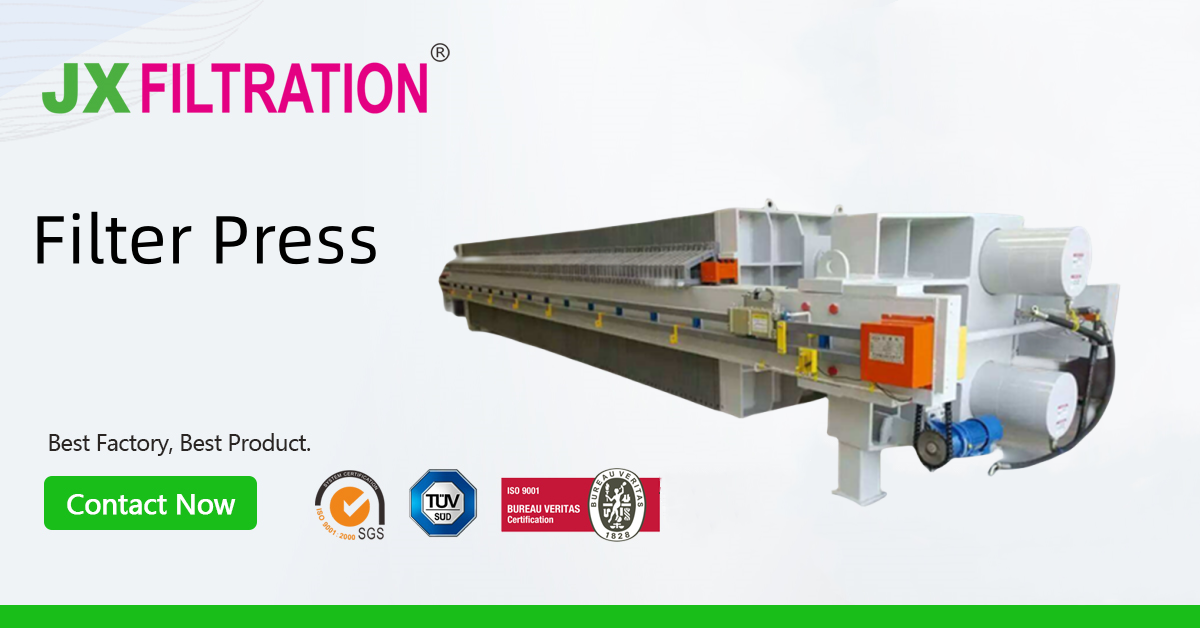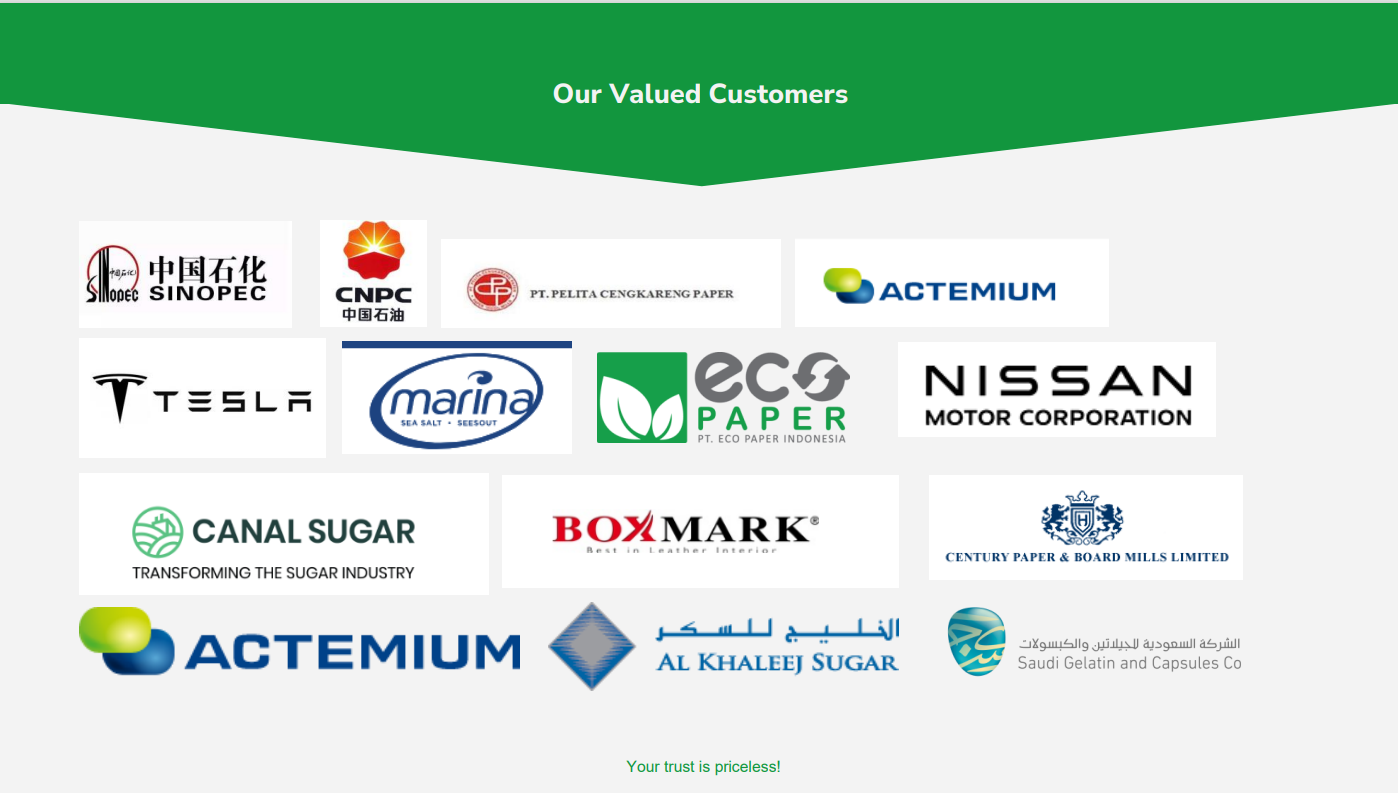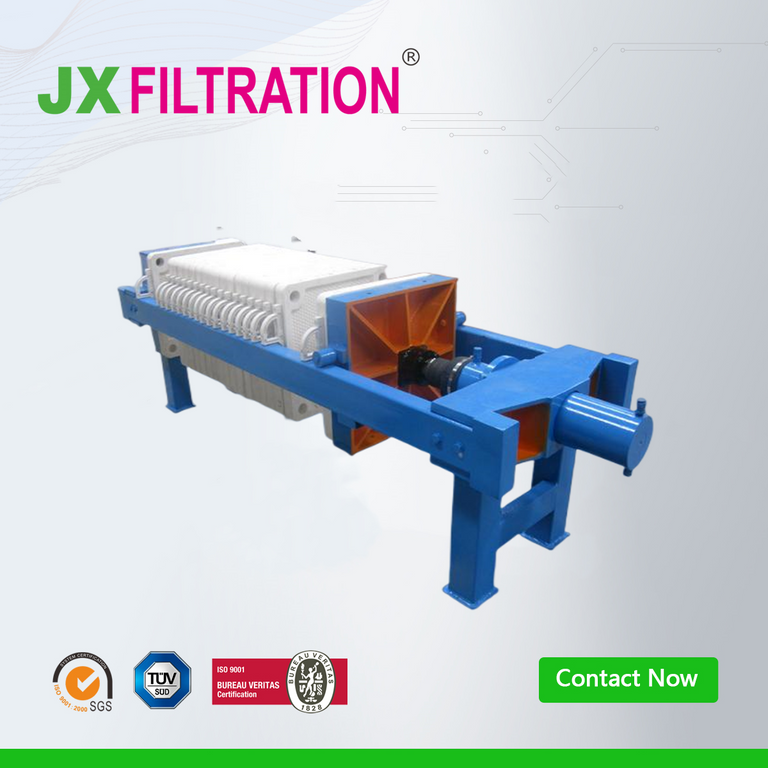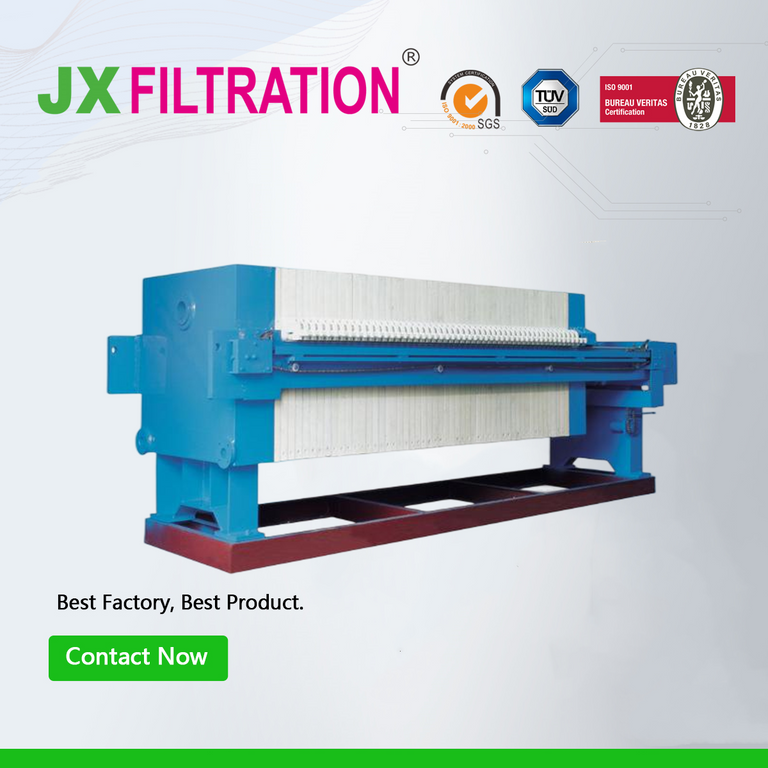Filter Press
The filter press is a commonly used intermittent filtration device in factories. It consists of a frame, fixed support plates, filter plates, filter frames, pressing plates, crossbeams, and a pressing device. Two parallel crossbeams are installed between the frames, and the filter plates and filter frames are sequentially suspended vertically on the crossbeams.

Selection of Plate and Frame Filter Press
The plate and frame filter press fills the slurry between the filter plates, squeezes out the water by pressing the filter plates, and filters the sludge through the filter cloth, ultimately achieving dewatering.
It generally consists of a support frame, hydraulic cylinder, filter plate, air supply system, filter cloth washing system, and limit device.
I. What aspects should be considered in equipment selection?
-
Cake moisture content: The plate and frame filter press have a more direct and relatively long squeezing and dewatering process, with high efficiency, resulting in a lower moisture content in the processed cake, occupying less space.
-
Plate and frame material: The plate and frame mainly use materials that are not easily deformed, have high stiffness, and are relatively light. These materials should withstand high pressure during the squeezing process.
-
Filter cloth material: The selection of filter cloth requires corrosion resistance, strong tensile strength, and good filtration properties.
-
Operating mode: The movement of the plate and frame can be controlled by hydraulic or pneumatic means. Pneumatic operation may produce loud noise.
The selection of filter plates and filter cloth is particularly important.
II. Selection of Filter Plates
The selection of filter plate materials is crucial. Considering the working environment of the filter plate, where the sludge contains corrosive substances, the material should have corrosion resistance, strength, and wear resistance due to repeated squeezing and impact during operation.
Commonly used filter plate materials include:
-
Polypropylene (PP): This is the most commonly used material, exhibiting excellent corrosion resistance to various acids and bases, including strong acids such as hydrofluoric acid. It has good acid resistance, but its working temperature is relatively low, with short-term tolerance of materials up to 70°C.
-
PVDF: This material has the best acid resistance and temperature resistance among organic materials, with a normal temperature resistance of around 150°C. However, it has poor alkali resistance.
-
Natural rubber filter plate: It has good elasticity but poor strength, especially for diaphragms, where natural rubber performs well.
-
Aluminum filter plate: Among metal filter plates, aluminum is the lightest but has relatively poor acid resistance.
-
Cast iron filter plate: Heavyweight, poor acid resistance, extremely high temperature resistance. It is mainly used for the sealing surface, and organic materials must still be used, limiting its application.
-
Stainless steel filter plate: It has good acid and alkali resistance but is the most expensive among all filter plates. The material itself is costly, and machining time is significant.
In summary, considering the need for filter plates to have acid and alkali resistance, strength, and wear resistance, stainless steel is the preferred material.
Any Requirements, Contact Us Now!
Kris
Email/Teams: kris@filtrationchina.com
Mobile/Whatsapp/Wechat: +86 18980776200


